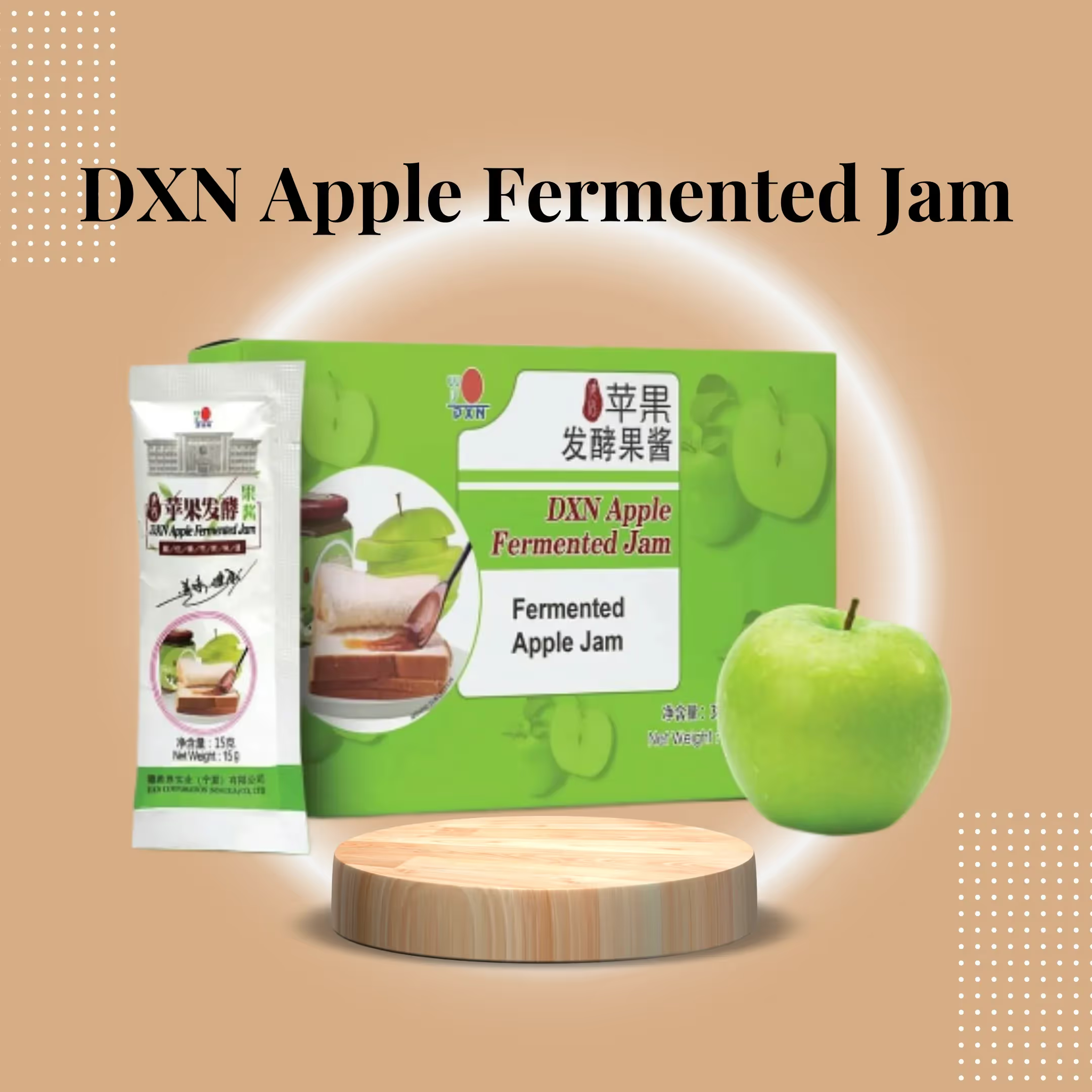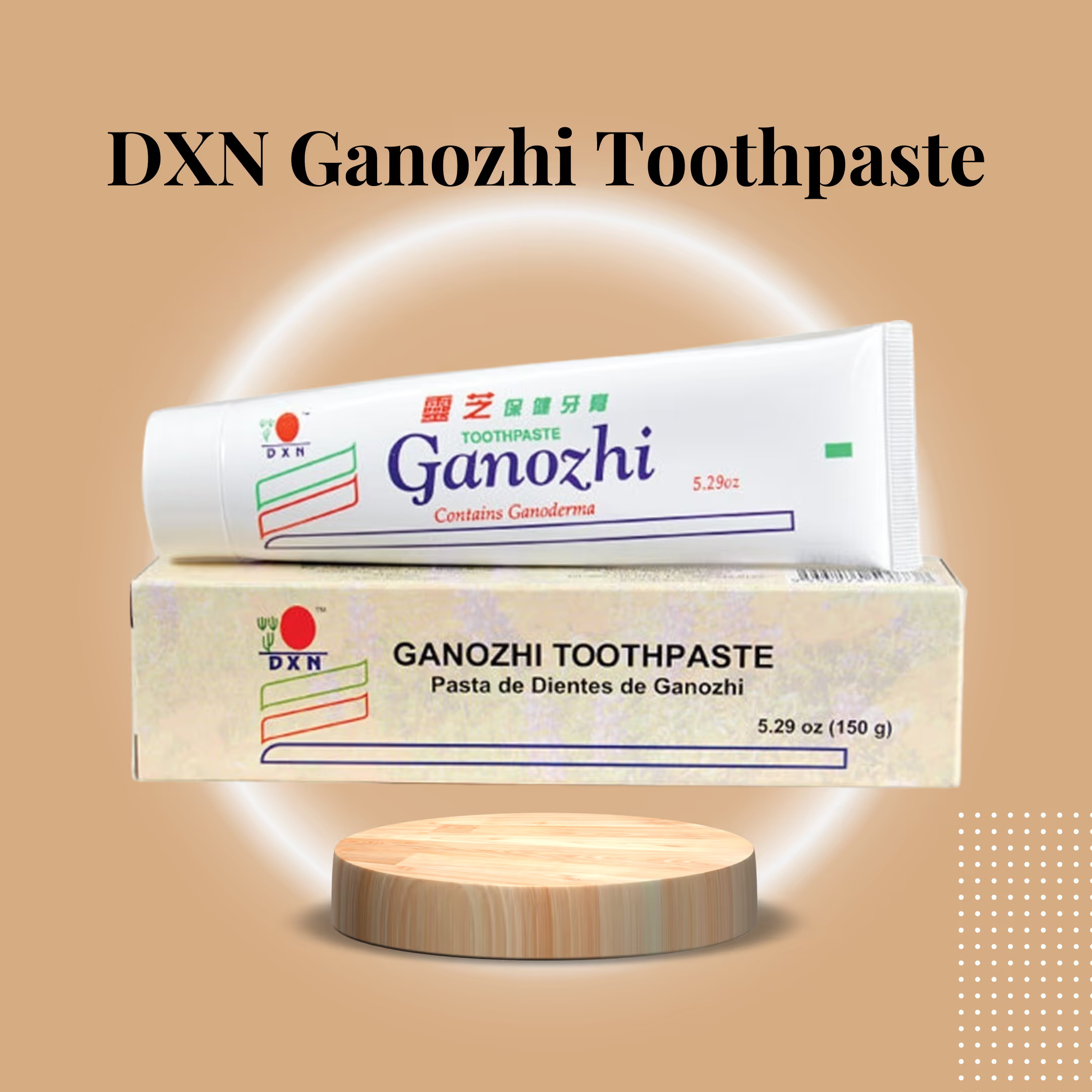1. Why fermented foods are experiencing a renaissance
Fermentation is one of humanity’s oldest food technologies, used for flavor, preservation, and nutrition. What’s different today is our ability to harness fermentation deliberately — using selected starter cultures and controlled processing — to amplify specific health-promoting molecules while minimizing unwanted by-products. Fermented foods can:
- increase the bioavailability of plant compounds,
- Postbiotic metabolites, which are bioactive compounds made by beneficial microbes during fermentation, can interact with human physiology.
- Fermentation can help favorably shift the structure of the gut microbial community, thereby increasing the number of beneficial bacteria in your gut.
Transitioning from this broader perspective, let's look at apples—a fruit naturally rich in pectin, polyphenols, and natural sugars. When fermented, apples unlock a new functional profile that combines taste with targeted biology.
2. What DXN Apple Fermented Jam is (and how it’s different)
DXN Apple Fermented Jam resembles a premium fruit spread but is a controlled-fermented product made from premium apples, transformed by selected microbial cultures, concentrated into a jam-like matrix, and portioned into 15g sachets. This format preserves freshness and reduces oxidation or spoilage, which is important for maintaining sensitive bioactives.
Key differences from conventional jam and from other apple products:
- Not heavily heat-processed. Rather than prolonged boiling, which destroys heat-sensitive phytochemicals, the product utilizes fermentation to develop texture and flavor while preserving active compounds.
- Functional-first design. The process is engineered to maximize enzyme and metabolite creation, not simply sweetness.
- Sachet packaging. Single-serve packs minimize exposure, support dose control, and provide convenience.
- Lower sugar than typical jams. Fermentation consumes some sugars and produces organic acids, resulting in a milder glycemic response compared to high-sugar preserves.
3. The fermentation process — what happens to the apple
When apples are fermented under controlled conditions with designated cultures (such as targeted strains of lactic acid bacteria), several valuable changes take place:
- Microbial breakdown of complex carbohydrates. Long-chain polysaccharides and cell wall components are cut into smaller, more bioavailable fragments.
- Production of digestive enzymes. Fermentation generates enzymes (or enzyme-like metabolites), including amylases and pectinolytic enzymes, which help digest carbohydrates and fiber.
- Synthesis of organic acids and postbiotics. Lactic acid, acetic acid, and other metabolites modify taste and lower pH, creating an environment less hospitable to pathogens and more favorable to beneficial microbes.
- Release of phytonutrients. Phenolic compounds and antioxidants are types of beneficial plant chemicals that are often trapped inside plant cells. Fermentation helps release them, making them more easily absorbed by the body.
- Reduction of simple sugars. Microbes consume free sugars, often reducing the overall glycemic load relative to unfermented preserves.
In short, controlled fermentation converts apples into a more bioactive, microbiome-friendly matrix.
4. Ingredients and nutritional highlights
Typical ingredients and characteristics for a product like DXN Apple Fermented Jam include:
- High-quality apples—the foundational fermenting substrate and the source of pectin and polyphenols.
- Selected starter cultures are specific strains of beneficial bacteria or yeast chosen to maximize the production of safe and desirable bioactive compounds while minimizing off-flavors or unwanted byproducts.
- Minimal added sugar — only what is necessary for stability and palatability, often lower than in conventional jams.
- No artificial preservatives or colors — relying on fermentation and packaging for shelf stability.
- Single-serve sachets — 15 g portions that make it easy to control calories and use on the go.
A representative nutritional snapshot per 100 g (estimate; check label for product-specific values):Energy ~ 170–180 kcal, Carbohydrates ~ 40–45 g, Sugars lower than classic jam (because fermentation consumes part of the sugar), Fat ~ 0 g, Protein ~ negligible, Dietary fiber modest but pectin-rich.
Due to fermentation's effect on sugar and acid levels, the jam generally produces a gentler metabolic response than high-sugar preserves.
Having covered nutritional aspects, we can now focus on the core functional benefits of the jam.
Fermentation yields enzyme-like compounds and organic acids that help prime the stomach and small intestine for digestion. When taken before or with meals, the jam can reduce bloating and the sense of heaviness by assisting in the initial breakdown of food.
5.2 Promote a healthier gut microbial profile
Studies on fermented apple products show that they can shift the gut microbiome toward beneficial taxa — for example, increasing the relative abundance of groups like Bifidobacterium and Parabacteroides while decreasing some opportunistic genera. Over time, this restructuring supports metabolic health and gut resilience.
5.3 Improve nutrient absorption and bioavailability
Because fermentation breaks down plant cell walls and releases phenolics and nutrients, these beneficial compounds become more readily accessible for absorption.
5.4 Provide sustained, cocoa-free energy
Fermented apple matrices, which are the mixture or structure created by fermentation, may support steady energy production without the jittery spikes associated with sugars or stimulants.
5.5 Support immune and barrier function
The jam’s postbiotic metabolites and pectin content help preserve mucosal integrity and moderate low-grade gut inflammation — an important factor in systemic immunity.
6. Who gains the most from using this jam
- People with meal-associated bloating or mild dyspepsia who want a food-based support.
- Individuals seeking lower-sugar options that still satisfy sweet cravings.
- Home cooks and families seeking a functional spread that is safe for children and the elderly.
- Athletes are looking for a natural carbohydrate that supports digestion and recovery.
- Anyone building a holistic supplementation stack can prepare the gut to better absorb other nutrients and supplements.
7. Practical ways to use the product
Straight from the sachet
A single-serve packet is a perfectly portioned, low-calorie snack.
As a spread
Apply to whole-grain toast, rice cakes, or plain yogurt. The mild sweet-and-sour profile pairs well with neutral carriers and adds functional value to breakfast or snacks.
Mixed into beverages
Stir one to two sachets into water for a refreshing fermented “shrub” drink. The acids and enzymes dissolve quickly, providing both hydration and metabolic support.
As a culinary ingredient
Use in dressings, marinades, or glazes for savory dishes: the acidity and fruit notes balance fats and proteins, adding subtle complexity.
Pre- or post-workout
Consume 20–30 minutes before exercise for rapid, accessible energy, or after training for carbohydrate-driven, gut-friendly recovery.
8. Best timing and dosing strategies
- For digestion: take a sachet 20–30 minutes before a large meal to prime digestion.
- For energy: take on an empty stomach in the morning for a metabolic kick-start.
- For recovery: use within 30–60 minutes post-exercise.
- Daily maintenance: 1 sachet per day is sufficient for most people; some individuals use 1–2 sachets, depending on their overall calorie and sugar goals.
Because the jam is a food product with modest calories, it’s straightforward to fit into most eating plans — just account for the carbohydrates if you’re tracking macros or blood glucose.
9. Safety profile and interactions
DXN Apple Fermented Jam is generally safe for healthy adults and children as directed. Main precautions:
- Pregnancy & breastfeeding: consult a healthcare provider before regular use.
- Diabetes or blood sugar issues: The product contains carbohydrates; monitor your blood glucose and work with a clinician to incorporate it into your plan.
- Pancreatic disease or major GI disorders: consult your physician if you have chronic pancreatitis or other serious conditions where enzyme supplementation may interact with disease processes.
- Medication interactions: Certain medications can be affected by changes in gut function or by bioactive compounds. Consult a healthcare provider if you take blood thinners, diabetes medication, or other chronic medications.
Because the product is often designed to minimize harmful fermentation byproducts (such as high levels of histamine or tyramine), it tends to be well-tolerated. Packaging and controlled production further reduce contamination risks.
10. Label literacy: what to look for when buying
- Ingredient transparency. The label should list apples (source), any starter cultures used (or “naturally fermented with selected cultures”), added sugars, and any stabilizers.
- Sugar content per serving. Check grams of total carbohydrate and sugars for accurate macro tracking.
- Processing method claims. Phrases like “naturally fermented” and “no preservatives” are useful but look for clarity on whether the product is heat-deactivated (postbiotic) or contains live cultures (probiotic).
- Packaging format. Single-serve sachets reduce oxidation and microbial contamination compared to multi-use jars.
- Third-party testing. Certificates for heavy metals, microbial contamination, or pesticide residues are a positive sign for quality-focused buyers.
11. How the jam fits into a broader wellness regimen
DXN Apple Fermented Jam is best seen as a component of a layered strategy:
- Digestive foundation: Use the jam to improve digestion and prime the system.
- Add bulk fiber: Complement with fiber-rich products (e.g., whole grains, greens, or fiber supplements) to support transit.
- Boost microbial diversity by rotating fermented foods, such as kimchi, kefir, and fermented vegetables, for broader microbial inputs (if your diet tolerates them).
- Support systemically: Pair with adaptogens, antioxidant-rich foods, and proven supplements as needed for stress, sleep, and immune balance.
Viewed this way, the jam helps create a receptive gut environment that makes other interventions more effective.
12. Manufacturing and quality control considerations
High-quality fermented products require rigorous control, including the selection of specific strains, stable fermentation temperatures and times, gentle processing, and swift packaging. Sachet packaging minimizes air exposure and stabilizes compounds. Reputable manufacturers will validate:
- strain identity and safety,
- absence or acceptable low levels of biogenic amines,
- contaminant testing (heavy metals, mycotoxins), and
- stability of active metabolites over shelf life.
These controls help ensure the consumer receives predictable functional effects from each serving.
13. Comparing DXN Apple Fermented Jam to similar products
- Versus classic jam: lower sugar, higher bioactives, and added digestive/metabolic benefits.
- Versus apple cider vinegar: ACV is high in acetic acid and used mainly for tonic effects; fermented jam is a more complex functional food providing enzymes, pectin, and usable carbohydrates.
- Versus probiotic drinks: probiotic beverages deliver live microbes but require a cold chain and raise concerns about viability; the jam’s fermentation-derived metabolites (postbiotics) are stable and predictable without refrigeration.
14. Real-world use cases and testimonials (how people use it)
- Busy parent: keeps sachets in lunchboxes for kids who prefer a sweet but less processed spread on toast.
- Traveler: uses packets to help avoid digestive upset when eating rich airport food.
- Office worker: mixes a sachet with water in the late afternoon to steady energy for evening tasks.
- Fitness enthusiast: pairs a sachet with a protein snack post-run for comfortable recovery.
15. Culinary creativity — recipes and pairing ideas
- Functional French toast: spread a light layer of jam on whole-grain bread before dipping in egg mixture for a nutrient-rich twist.
- Yogurt parfait: layer plain yogurt, a sachet of jam, and some seeds for a gut-friendly snack.
- Salad vinaigrette: whisk a sachet with olive oil, mustard, and lemon for a fruity, lightly acidic dressing.
- Marinade: use as a base for a glaze on chicken or pork for balanced sweetness with digestive support.
16. Frequently asked operational questions
- Shelf life: Sachet packaging extends shelf life; keep in a cool, dry place.
- Temperature: Avoid prolonged exposure to heat; room temperature storage is typically suitable.
- Children: Generally safe, but consult pediatric guidance for infants or very young children.
.avif)





